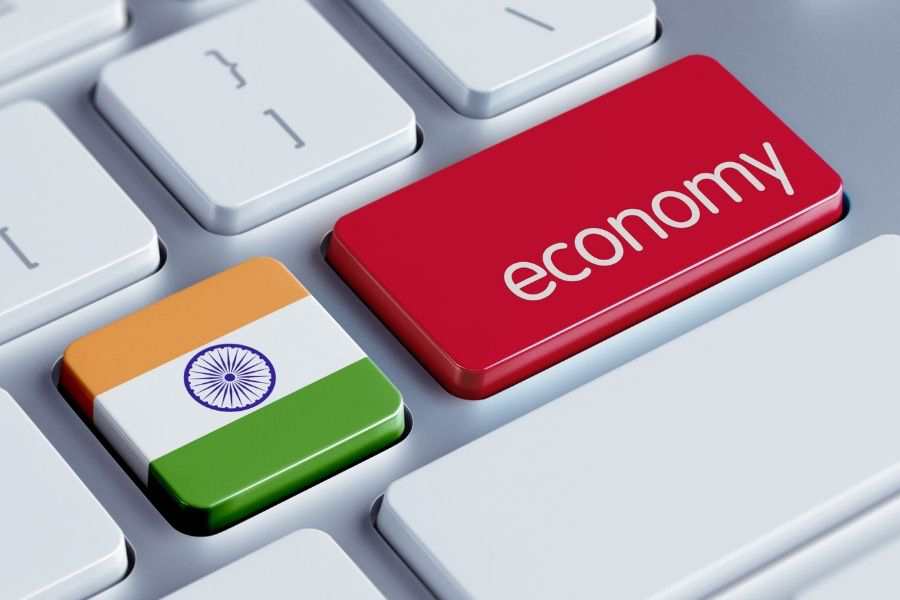Concrete steps needed towards attaining sustained economic growth objective

One does not have to be an economic pundit to prophesy that India is set for an explosive growth. Great changes are taking place in the country which will have game-changing opportunities for the country’s economy and wide ranging implications for domestic businesses, multinational companies, and the government.
Prime Narendra Modi’s announcement recently welcoming the world to explore economic opportunities that India has to offer is sure to have long-lasting ramifications. India has jumped 30 places in World Banks Doing Business Report 2018, which is the highest jump by any country in the doing business sector. It is among the top 10 ‘improvers’ globally, having done better in 8 out of the 10 business spheres, with the most significant jump in taxation policy and business environment improving at the 5th fastest pace in the world. Ease of businesses getting credit ranking has moved 15 places from 44 to 29 and ease of paying taxes has jumped 53 places from 172 to 119.
It is evident that the journey of economic liberalization through opening doors to globalization and market forces, on which India embarked in 1991, has started showing results. This has raised India’s economic growth, increased consumer choice, and reduced poverty significantly.
Now, as uncertainties cloud the global economic picture, the IMF has projected that India’s GDP will continue to grow, making it the world’s fastest-growing economy. This recent economic success, having base in India’s sound liberalization policies rolled out in 1991 and still continuing, has led to South Asia becoming the fastest-growing region in the world.
India is home to more than 1.35 billion people, amounting to 18% of the world’s population. By the rate at which India’s population is growing, it will become the world’s most populous country by 2024.

Out of the leading developed and developing economies in three regions – the Americas (Brazil, Mexico, and the US), EMEA (France, Germany, the Netherlands, Russia, Saudi Arabia, South Africa, the UAE, the UK) and Asia Pacific (Australia, China, Hong Kong, India, Indonesia, Japan, Malaysia, Singapore and Thailand), India is currently the only major world economy with a potential for talent surplus, with 245 million more workers in the next decade from now. As regards to highly skilled workers, India is likely to see a surplus of 1.3 million workers by 2030. Consequently, while an increasing global talent crisis is likely to cost huge amount for different countries, India may even challenge America’s position in technology, media and telecommunications sector because of its surplus work force.
This is why it is extremely essential for policy planners to act, keeping the emerging trends in mind. The talent surplus can act both ways, either as a boon or a bane for India. If no concrete steps are taken to create jobs, this skilled workforce could add to our woes of jobless growth and unemployment. The world’s largest youth population cannot be left unskilled as well, as it will further increase the problems. Only option therefore is to take immediate concrete and genuine steps to skill our youth and then create job opportunities for this workforce. However, in this fast changing world, even skills have a short shelf-life. Programs need to be implemented which enable youth to upgrade their learning on continuous basis, to make them competitive and ready for job challenges.
India today offers an attractive long-term future powered largely by a consuming class that’s expected to more than triple, to 89 million households, by 2025. The challenge that the policy makers face is to manage growth so that it creates the basis for sustainable economic performance. Although lot has been done, India’s transformation into a global economic force has to reach and benefit all its citizens. There are still a lot many areas where even the basic services, such as water and sanitation, energy, and health care, etc. have not reached.
Steps need to be taken that the economic boom does not benefit only the creamy class but percolates down to the lower levels. India will have to build its policies so that more and more people are elevated from poverty and brought into the middle-class fold. Basic minimum living standards should be met – be it in nutrition, water, sanitation, energy, housing, education, and healthcare. Policy planners will have to ensure that job creation, growth-oriented investment, all-sector productivity, and innovative social programs reach out to the needy masses.
Infrastructure is another area that needs to be addressed. To ensure economic growth, India’s increasingly large number of smaller cities, which are adding in size and population, will have to be made more livable places, offering the basic amenities. Swachh Bharat Abhiyan is based on achieving these objectives but more focused approach need to be followed.
Make in India and Skill India are two more schemes of Central Government, which if effectively carried out, will create substantial opportunities to invest in value-creating businesses and to create jobs. India’s appeal to potential investors will be more than just the low-cost labour; Make in India is aimed at making the manufacturers build competitive businesses to tap into the large and growing domestic market. Added reforms and public infrastructure investments could make it easier for all types of manufacturing businesses – both indigenous and foreign – to achieve scale and efficiency. Skill India will eventually also help achieve the Make in India objectives.
Another area of concern is the gap that still exists between the sexes.

Women contribute only 17 % of the GDP and make up to 24% of the workforce, compared with 40% globally. This is the force that is waiting to be unleashed. If the hurdles in the way are removed and effective progress is achieved towards attaining gender parity, it will give a huge boost to India’s GDP in the next decade.
All this is easier said than done! We are still far away from providing the basic services such as education and healthcare. Skilling too is not moving on desired lines so far. Country will have to make concentrated efforts so as to lead India to never-before-reached path of economic growth and prosperity.













Leave a comment